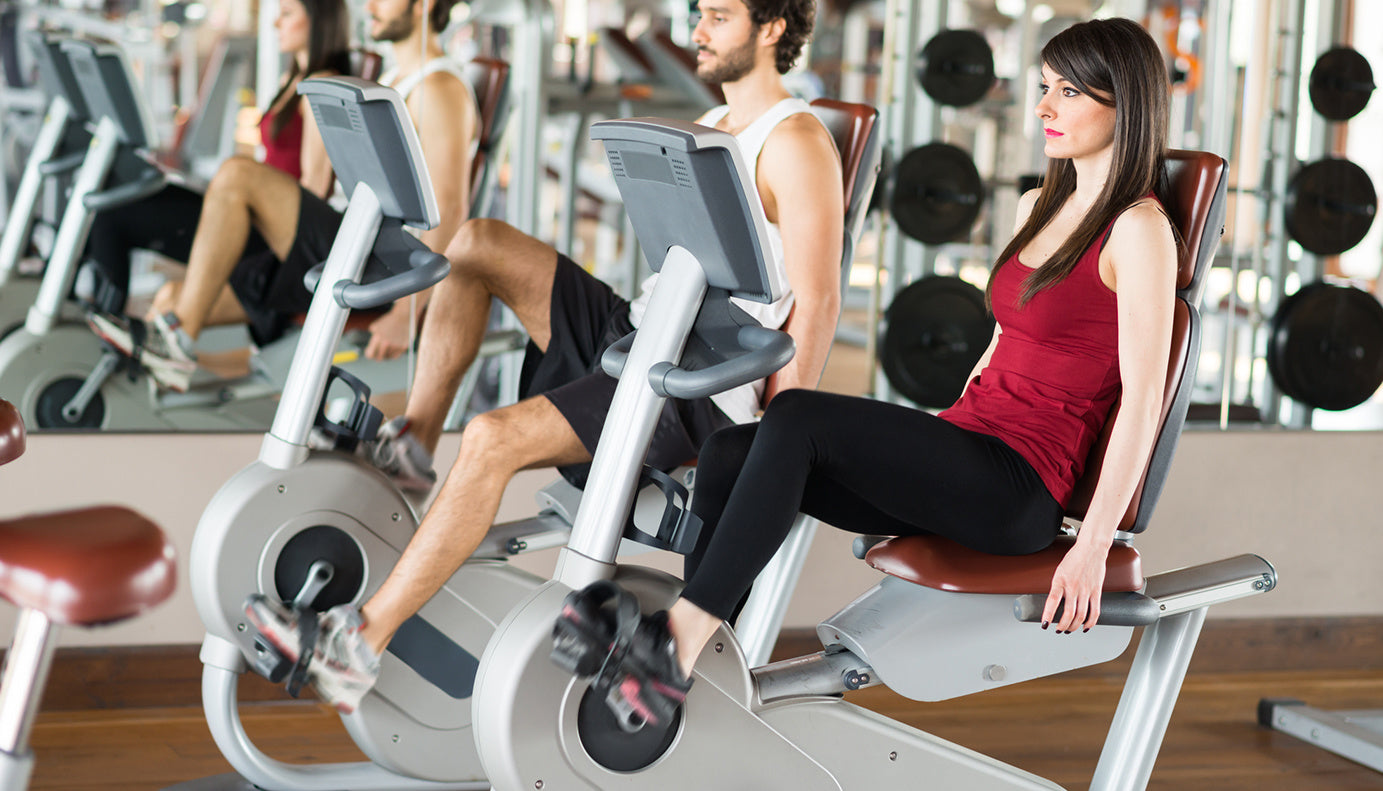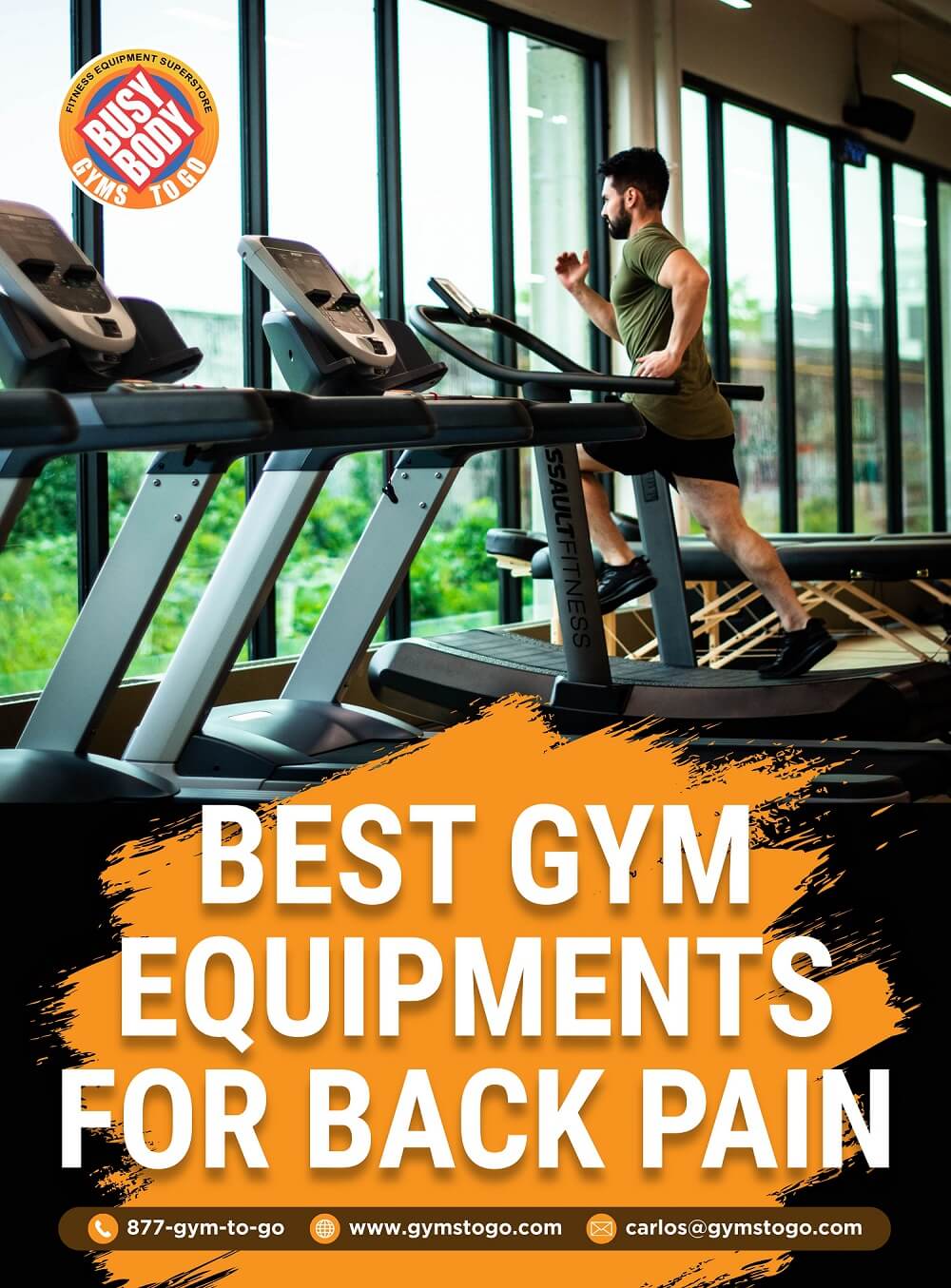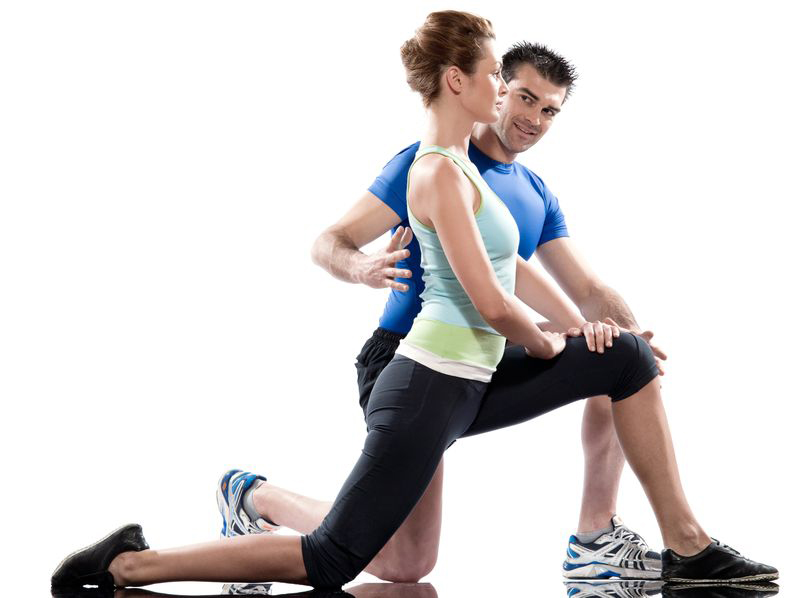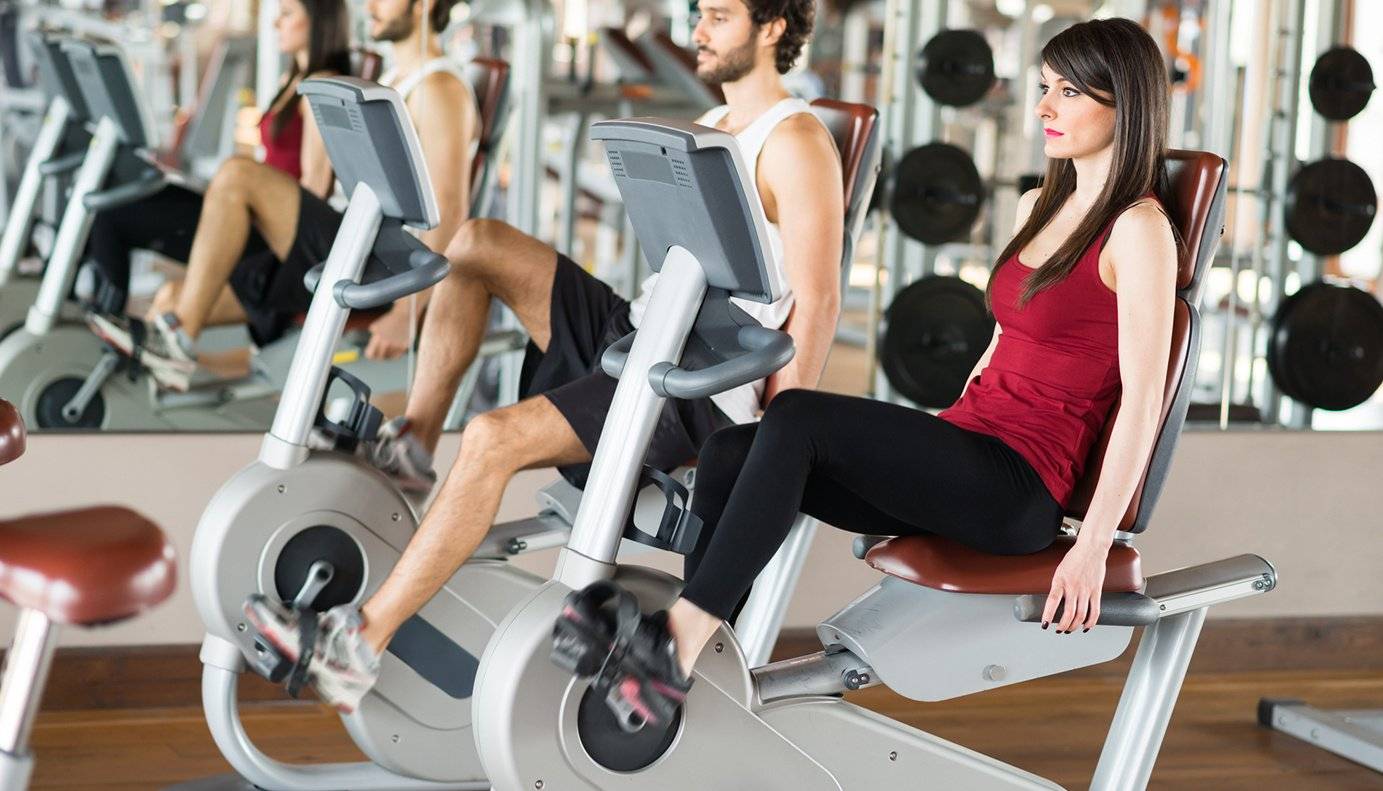The best exercise machine for lower back problems is typically an elliptical trainer. This equipment minimizes stress on the back while providing a full-body workout.
Dealing with lower back issues can significantly affect one’s daily activities and exercise routine. Choosing the right exercise equipment is crucial for managing back pain and preventing further injury. An elliptical machine emerges as the top contender due to its low-impact nature, which is key for those with lower back concerns.
The smooth, gliding motion helps maintain an upright posture, reducing the strain on the back. This machine not only protects the lumbar region but also engages multiple muscle groups, ensuring a balanced workout that promotes overall spinal health. Careful exercise selection, guided by quality equipment like the elliptical trainer, can lead to both relief and strengthening of the lower back.

Credit: akfit.com
Identifying Lower Back Pain
Lower back pain can stop you in your tracks. It’s vital to understand the pain in order to find the best exercise machine. Whether it’s caused by injury or poor posture, knowing the root will help in selecting the right equipment for relief.
Common Causes
Several factors might contribute to lower back pain. Often, it’s an issue of lifestyle or an injury. Here are the most frequent culprits:
- Strained muscles due to heavy lifting
- Long sitting hours lead to weakened muscles
- Poor posture and ergonomics at work
- Overuse in daily activities or sports
- Conditions like sciatica or disc issues
Symptoms To Recognize
Recognizing symptoms early can prevent chronic issues. Take heed if you notice:
| Symptom | Significance |
|---|---|
| Consistent aching or stiffness | To the touch, the back may feel sore or delicate. |
| Sharp pain in the lower back | Usually localized around the lumbar region |
| Pain radiating down legs or buttocks | May indicate nerve compression like sciatica |
| Difficulty moving or standing straight | Limited flexibility or range of motion |
Pay attention to your body and consult with a healthcare professional if you experience these symptoms.
Exercise Benefits For Lower Back Health
Lower back health is critical for overall well-being. Regular exercise can mean the difference between chronic pain and a strong, healthy back. Understanding the right kind of physical activity is crucial for those managing lower back issues.
Strengthening Core Muscles
A solid core is vital for lower back support. Core muscles help stabilize the spine. They prevent injury during physical activity. Effective exercises include gentle workouts that target these muscle groups.
Machines beneficial for core strengthening:
- Recumbent Bikes
- Elliptical Trainers
- Rowing Machines
Choose a machine that allows adjustments to intensity. It ensures a safe and effective workout for building core strength.
Increasing Flexibility And Mobility
Enhanced flexibility can ease lower back tension. Mobility is crucial in maintaining spinal health. Regular stretching on specific machines can help achieve this.
Exercise machines aimed at enhancing flexibility:
- Pilates Reformers
- Stretch Trainers
Look for machines that provide a range of motion. They should allow for stretching different back muscle groups without strain.
Types Of Exercise Machines
Finding the right exercise equipment for lower back issues means understanding different types. Let’s dive into the world of exercise machines that are gentle on the back and promote healing.
Classification By Motion
Exercise machines have various movements that affect the lower back. Some offer linear motions, ideal for controlled, targeted workouts. Others feature elliptical or circular motions, which provide a more fluid exercise experience.
- Stationary Bikes: Smooth pedalling minimizes strain.
- Rowing Machines: Engage the back in a safe, repetitive motion.
- Elliptical Trainers: Simulate walking with less impact.
Impact Levels On The Body
Select machines designed to minimize stress on the spine. Low-impact exercise machines support the back while building strength.
| Machine Type | Impact Level |
|---|---|
| Recumbent Exercise Bikes | Low |
| Resistance Machines | Varies |
| Treadmills with Cushioning | Medium |
Evaluating Machine Support For The Lumbar Region
Those with lower back problems need exercise machines designed for protection. Lumbar support is crucial for safe and effective workouts. Choosing the right equipment minimizes risk and enhances recovery.
Ergonomic Design Considerations
Ergonomic features tailor machines to a user’s body, preventing stress on the lower back. Look for equipment with lumbar padding and natural movement paths. These aspects ensure spine alignment, reducing injury chances.
- Contoured seats that support the natural curve of the spine.
- Handgrips positioned to maintain an upright posture.
- Foot pedals aligned properly to lower body mechanics.
Adjustability For Personal Comfort
Each individual has unique needs for lumbar region support. Adjustability allows for personalization. Machines with various settings cater to different heights, weights, and flexibility levels.
- Select machines with a wide range of seat adjustments.
- Ensure a proper fit to reduce strain on the back.
- Check for equipment allowing alterations in resistance and incline.
| Feature | Benefit |
|---|---|
| Adjustable Seat Height | Matches the user’s leg length to avoid overextension. |
| Movable Backrests | Supports the lumbar curve at the right angle. |
| Customizable Programs | Allows a gradual increase in intensity to avoid strain. |
Elliptical Trainers And Lower Back Relief
Elliptical trainers offer a special advantage for those with lower back problems. These machines provide a smooth cardiovascular workout without putting excess strain on the spine. Perfect for maintaining fitness while protecting the back, elliptical trainers are often recommended by physical therapists.
Low-impact Workout Benefits
Why choose an elliptical trainer for lower back issues? Its low-impact nature stands out. Below are the key benefits:
- No harsh impacts: Feet stay on the pedals, preventing jolts to the back.
- Even weight distribution: Helps minimize over-exertion of any one body part.
- Mimics natural movement: The motion aligns with normal walking or running.
- Strengthens core: Engaging the abdomen protects and supports the lower back.
Elliptical Form And Technique
Correct form on an elliptical maximizes back relief. Follow these guidelines:
- Stand tall, with shoulders back and a straight spine.
- Hold handlebars lightly to reduce upper body tension.
- Set the incline and resistance to comfortable levels.
- Use forward and backward motions to engage different muscles.
Remember, stopping when pain arises is crucial. Consult with a medical professional before starting any new exercise regimen to ensure it’s safe for individual health conditions.
Rowing Machines: Full-body Workout With Back Benefits
Living with lower back pain can be challenging. Finding the right exercise equipment is key. A rowing machine might just be the perfect solution. It offers a comprehensive workout while being gentle on the back. Let’s explore how the rowing motion and supportive features of these machines help strengthen the back and alleviate discomfort.
Posture And Rowing
Good posture is critical when dealing with back issues. Rowing encourages a straight back and proper alignment. As you pull, your core tightens, and your back muscles engage. This strengthens your spine over time.
- Align shoulders over hips.
- Engage your core during the stroke.
- Reduce stress on the lower back.
Rowing Machine Features For Back Support
When choosing a rowing machine, certain features provide additional back support. Look for these:
| Feature | Benefit |
|---|---|
| Adjustable resistance | Tailors the workout to your strength level. |
| Ergonomic seat | Supports the spine and reduces strain. |
| Padded handlebars | Ensures grip without unnecessary tension. |
| Footrest design | Aligns the lower body to prevent twisting. |
Remember to start slow and always warm up. With regular use, a rowing machine can bring significant relief and support your lower back health.
Stationary Bikes: Cardio With Caution
People with lower back problems often seek exercise options that won’t exacerbate their discomfort. Stationary bikes offer a low-impact cardiovascular workout that can help in strengthening the back muscles. Yet, using them requires particular care to avoid strain.
Recumbent Vs. Upright Bikes
Choosing a suitable stationary bike is crucial for protecting your lower back. There are two main types:
- Recumbent bikes have a backrest and a bucket seat.
- Upright bikes are like traditional bicycles with no back support.
A recumbent bike’s design supports the back better and may be more comfortable for those with back conditions. In contrast, upright bikes can be tougher on the spine.
| Bike Type | Seating | Back Support | Impact on Lower Back |
|---|---|---|---|
| Recumbent | Bucket seat | Good | Lower impact |
| Upright | Standard seat | None | Higher impact |
Cycling Form And Lower Back Impact
The way you cycle considerably affects your lower back. Poor posture on a bike can lead to discomfort.
- Keep your back straight and avoid slouching.
- Make sure your legs are slightly bent by adjusting the seat height.
- Handlebars should be at a comfortable reach to prevent leaning forward too much.
Proper form lowers the risk of injury and can help manage lower back pain.

Credit: gymstogo.com
Comparing Treadmills And Back Support
Finding the right exercise machine can make a difference for those with lower back issues.
Comparing treadmills and their back support options is crucial to manage pain and enhance physical health.
Walking Vs. Running
Walking offers gentle movement that minimizes stress on the lower back. Running can be jarring, potentially worsening back pain.
Treadmill Features That Aid Back Relief
- Good Cushioning: Absorbs the impact on each step.
- Incline Settings: Allows for lower back relief by adjusting walking angles.
- Speed Variation: Eases into exercise without sudden jolts.
These features ensure the back remains supported during a workout on a treadmill.
Alternative Machines: Balancing Workout And Comfort
Finding the right exercise equipment for lower back problems can offer relief and aid recovery. It’s crucial to balance a thorough workout with the comfort your back needs. Let’s explore machines that provide this balance without straining your lower back.
Pilates Reformer
The Pilates Reformer stands out for its versatility and back support. Here’s why it’s effective:
- Low impact: Gentle on the lower back.
- Adjustable: Tailors to your comfort level.
- Strengthens core: Stabilizes the lower back.
Exercises on the Reformer are done lying down, sitting, or standing. This machine uses springs for resistance, which you can adjust to your fitness level.
Key moves for back care on the Reformer include:
- Footwork
- Pelvic lift
- Spine stretch
These exercises target back muscles with precision and support.
Vertical Climbers
Vertical climbers offer a high-intensity workout that’s also low-impact. The vertical climber’s benefits include:
- Cardio plus strength: Boosts heart rate while building muscle.
- Engages full body: Reduces lower back load.
- Mimics climbing: Natural spinal alignment.
While using a vertical climber, your back remains straight, which is key to preventing strain. The motion is smooth, eliminating jarring movements that can worsen back problems.
| Feature | Benefit |
|---|---|
| Smooth Operation | Protects against sudden back movements. |
| Adjustable Resistance | Customizes the workout to your ability. |
| Full Body Engagement | Distributes effort and minimizes back stress. |
Remember to maintain proper form to ensure maximum benefit and safety when using a vertical climber.
Guidelines For Choosing The Right Machine
When dealing with lower back problems, selecting the right exercise machine is crucial. It can make the difference between a beneficial workout and unwanted strain. Follow these guidelines to find a machine that aligns with your recovery and fitness goals without exacerbating back issues.
Aligning Goals And Equipment
Exercise objectives vary from person to person. Those with lower back problems should prioritize machines that offer good lumbar support and promote strength without pressure. Seek out low-impact equipment that can help in stabilizing your core. This approach aids in back rehabilitation and general fitness without risking further injury.
Consulting Health Professionals
Before making a choice, consult with a healthcare provider. They understand your unique situation and can recommend machines that suit your specific condition. Whether it’s a physical therapist or a spine specialist, their expert guidance ensures the exercise machine you pick supports your back health and aligns with your therapeutic needs.
Remember, the right machine:
- Supports the lower back during workouts
- Promotes core strength and stability
- Allows for adjustability to cater to your comfort
- Offers a low-impact exercise experience
Integrating Exercise Machines Into A Back Care Routine
For those with lower back issues, finding a safe way to exercise can be challenging. Integrating exercise machines into a back care routine can offer support and stability, promoting healing and strength without adding strain. Let’s explore how the right machines and exercises can become allies in managing back problems.
Creating A Balanced Workout Plan
Balance is key in any workout plan, especially for those dealing with back pain. A thoughtful mix of machines can protect the back while engaging the whole body. Aim for a mix of cardiovascular, strengthening, and flexibility exercises to create a holistic approach.
- Cardio machines like a recumbent bike
allow for a low-impact workout. - Strength equipment, such as a leg press, should be used with light weights and higher reps.
- Machines like cable towers can aid in controlled, functional movements.
Exercise should not cause pain. Stop if you feel discomfort. Workouts should start light and increase in intensity very slowly. Now, let’s weave in non-machine exercises to complement the routine.
Incorporating Non-machine Exercises
Pairing machine exercises with gentle, non-machine workouts supports flexibility and core strength. These moves can reduce stress on the back and enhance endurance.
| Type of Exercise | Examples |
|---|---|
| Stretching | Yoga, Pilates |
| Core Strengthening | Planks, bird dog |
| Low-Impact Aerobic | Walking, swimming |
Mix these activities throughout the week. Work with a skilled trainer for tailored advice. Maintaining proper form is a must to protect your back.

Credit: www.healthcentral.com
Real User Experiences
Exploring the impact of exercise machines on lower back health unveils a trove of personal insights. Real user experiences shine a light on which machines truly stand out. Countless fitness enthusiasts with back issues have shared their trials and triumphs. They did so to guide others towards wiser workout decisions. Let’s delve into their stories and safety tips.
Testimonials And Success Stories
Real-life feedback brims with appreciation for certain machines. Many individuals highlight the elliptical trainer and recumbent bikes. They praise them for their low-impact nature.
“After months suffering from back pain, the recumbent bike changed my life. It’s gentle and effective,” says Jane D., age 52.
Mark T., a 36-year-old avid gym-goer, adds, “The elliptical lets me stay fit without hurting my back!”
Warnings And Precautions From Users
Users stress the importance of correct machine use and posture. They also urge consulting with a doctor before starting.
- Always start with a low intensity to avoid strain.
- Ensure the machine fits your body size for proper alignment.
- Focus on building core strength to support the lower back.
| User | Machine | Warning |
|---|---|---|
| Emma K. | Treadmill | Avoid high inclines without proper core stability. |
| Liam S. | Rowing Machine | Incorrect form may increase back pain. |
Frequently Asked Questions For What Is The Best Exercise Machine For Lower Back Problems
What Gym Machines To Avoid With Lower Back Pain?
Avoid leg presses and standing calf machines if you have lower back pain, as these can increase pressure on your spine. Also, steer clear of any machine that causes discomfort during use, such as seated twist machines.
What Is The Best Workout For Bad Lower Back?
Consult a healthcare professional before starting exercises for a bad lower back. Core-strengthening workouts, like partial crunches, may be beneficial. Low-impact activities, such as swimming and yoga, can also aid in back strength and pain relief. Always prioritize proper form to avoid further injury.
Which Cardio Exercise Is Best For Lower Back Pain?
Low-impact cardio exercises, such as walking or swimming, are best for those with lower back pain, as they minimize stress on the back.
How Do I Strengthen My Lower Back To Stop Pain?
To strengthen your lower back and alleviate pain, engage in exercises like bridges, bird-dogs, and planks regularly. Incorporate stretching such as knee-to-chest pulls, and maintain proper posture. Always consult a healthcare professional before starting new exercise routines for tailored advice.
Conclusion
Selecting the right exercise machine for lower back issues is critical for your health journey. Consider comfort, adjustability, and supportive features. Elliptical trainers and recumbent bikes top recommendations. Consult a healthcare provider before starting a new workout regime. Prioritize your spinal health for a pain-free lifestyle.

I am a health writer and blogger based in the US and UK. I have been with the health department for six years. And I give advice on various health problems and solutions. I have a lot of experience in health matters and I share it here.

